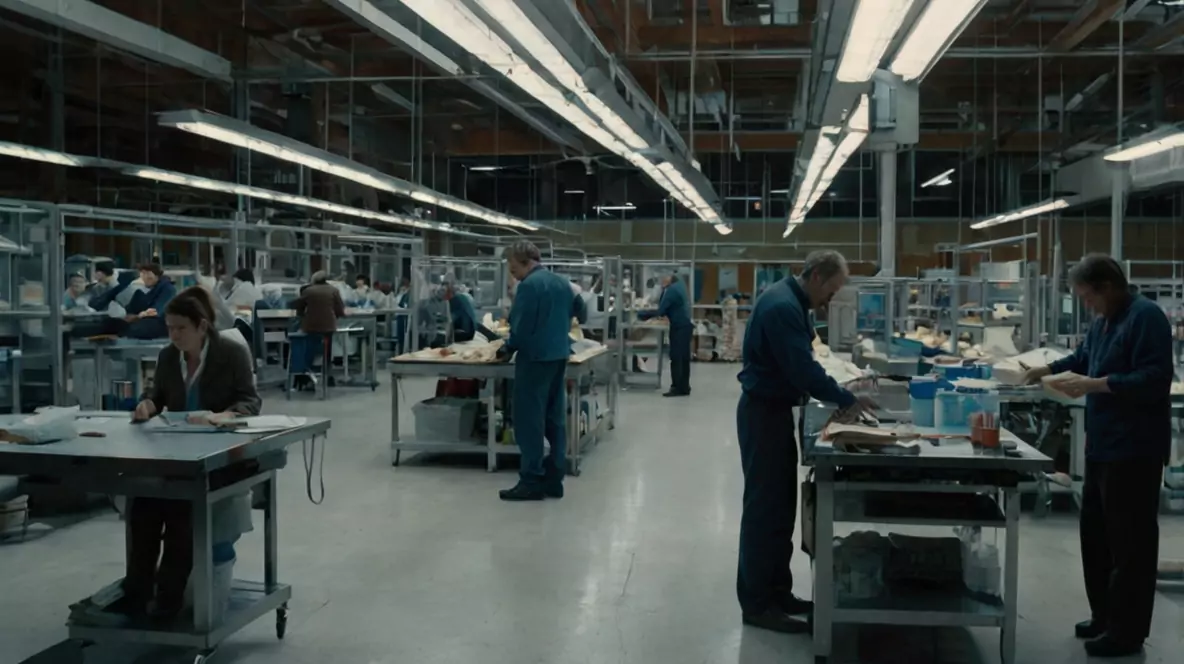
Industrial Diversity : How It Fuels Local Employment Growth in France!
How Industrial Diversity Fuels Local Employment Growth in France
In an era of rapid globalization, technological disruption, and recurring economic shocks, the ability of regions to foster sustainable employment has become a central concern for governments, businesses, and communities alike. What factors contribute to a region’s resilience? Why do some local economies rebound and thrive after crises while others struggle to regain footing?
At the heart of these questions lies the structure of a region’s industrial landscape. Recent research focusing on France’s labour market areas between 2004 and 2015 provides powerful insights into the role of industrial diversity—and more importantly, the type of diversity—in shaping local employment outcomes.
The results show that diversity is not always equal. Regions with a rich mix of related industries—those that share technologies, skills, or supply chains—tend to outperform those with either a narrow industrial base or unrelated sectors that lack synergy. These patterns aren’t just academic curiosities; they carry profound implications for how regions prepare for economic challenges, foster innovation, and create lasting employment opportunities.
We are about to delve into the dynamics of industrial diversity and its impact on employment growth across France. From the nuances of related vs. unrelated variety, to how different regions fared during the 2008 financial crisis, to the contrasting fortunes of urban and rural areas, and finally to the concrete policy lessons that emerge—we explore how the composition of regional economies can be the key to building prosperity that lasts.


The Power of Related vs. Unrelated Industrial Diversity
Industrial diversity is not merely a question of how many sectors a region hosts—it’s about how those sectors interact. Economic geographers differentiate between two essential types of variety: related and unrelated. This distinction is fundamental to understanding how different forms of industrial diversity influence employment growth.
Related variety refers to the presence of industries that share technological, cognitive, or organizational linkages. Think of sectors like pharmaceuticals and biotechnology, or machinery and industrial design. These industries may differ in output but overlap in terms of knowledge bases, skills, and supply chains. This overlap creates fertile ground for knowledge spillovers, collaborative innovation, and workforce mobility—all of which contribute to regional job creation. When workers and firms operate in connected sectors, ideas flow more freely, new products emerge more easily, and firms can more swiftly adapt to changing market demands.
In contrast, unrelated variety refers to a mix of sectors with little in common—like tourism and metallurgy, or agriculture and software. While this form of diversity lacks the innovation-enhancing synergies of related industries, it provides a different kind of strength: resilience. By spreading economic risk across unconnected industries, regions with unrelated variety are better insulated from industry-specific downturns. If one sector contracts, others are less likely to be affected, helping to stabilize employment.

The empirical evidence from France between 2004 and 2015 underscores these dynamics. Regions with high levels of related variety saw more robust employment growth, particularly in advanced manufacturing, IT services, and chemicals—sectors where innovation thrives on inter-sectoral collaboration. These regions became hubs of dynamism, not just because they had many industries, but because those industries spoke the same language in terms of skills and technology.
Meanwhile, unrelated variety played more of a protective role. It didn’t significantly boost job creation, but it cushioned regions against the full impact of sector-specific shocks. For instance, if the automotive industry declined in one area, the presence of an unrelated but thriving sector like healthcare or logistics could help maintain overall employment levels.
The takeaway is clear: related variety is a driver of growth and innovation, while unrelated variety serves as a buffer of stability. An optimal industrial strategy doesn’t choose one over the other—it seeks a strategic balance. Regions that cultivate related sectors for innovation while also maintaining a baseline of unrelated variety for resilience are best positioned for long-term success.
Resilience During the 2008 Financial Crisis
The global financial crisis of 2008 was a stress test for economies around the world, exposing structural weaknesses and highlighting what enables some regions to withstand economic turbulence better than others. In France, the crisis served as a revealing case study in how industrial diversity—especially the presence of related industries—can buffer local economies against external shocks.

Regions with high levels of related variety proved significantly more resilient. The presence of interconnected industries enabled adaptive flexibility—a region’s capacity to pivot, reallocate resources, and preserve employment in the face of disruption. Firms operating in related sectors were often able to share technologies, repurpose existing infrastructure, or redeploy skilled workers across similar fields. This adaptability translated into lower job losses and quicker recovery times.
For instance, in areas where industries like automotive parts manufacturing, precision engineering, and industrial software coexisted, the downturn in one sub-sector could be partially absorbed by demand or innovation in another. Workers displaced from one firm found opportunities in adjacent fields where their skills remained relevant, softening the overall employment impact.
What’s especially striking is that these benefits weren’t confined within administrative boundaries. The research uncovered strong “neighborhood effects”—regions with related industries in adjacent labour market areas also experienced higher resilience. Knowledge spillovers, supply chain linkages, and labor mobility across neighboring zones helped stabilize broader regional economies. A highly specialized area could lean on the complementary capabilities of its neighbors, creating a form of regional interdependence that spread resilience beyond any one locality.
However, the effects of unrelated variety during the crisis were more mixed. While in theory this form of diversity should insulate against sector-specific downturns, the data showed that unrelated variety in neighboring regions could have a dampening effect on local employment. This suggests that when neighboring areas lack industrial coherence, their ability to contribute to a shared economic rebound is limited. Without overlapping expertise or supply chains, collaboration and spillovers are harder to achieve, reducing the potential for mutual support during downturns.
In short, the crisis revealed that resilience is not just about having a diverse economy—it’s about having the right kind of diversity, both locally and regionally. Related industries offer adaptive strength; unrelated ones offer insulation. But when related variety spans across regions, it creates a web of economic interconnection that can hold fast even when the global economy falters.
Urban-Rural Divide in Employment Growth
While industrial diversity plays a central role in shaping employment outcomes, its effects are not evenly distributed across space. The benefits of diversity—especially related variety—are amplified in some settings and muted in others, depending largely on a region’s urban or rural character. The urban-rural divide in France offers a compelling lens through which to understand these uneven dynamics.

Urban areas, with their dense, interconnected economic ecosystems, were significantly better positioned to harness the advantages of related variety. Cities act as magnets for specialized labor, investment, and innovation infrastructure—conditions that amplify the synergies between related industries. For example, a metropolitan region like Lyon or Toulouse might host a cluster of related sectors such as aerospace, electronics, and IT services. The proximity of firms allows for frequent interaction, faster knowledge diffusion, and stronger innovation cycles, all of which contribute to job creation and regional growth.
Moreover, urban regions benefit from what economists call “agglomeration economies”—the productivity gains that come when firms and workers cluster together. In such environments, workers with complementary skills can easily move between firms, while businesses can tap into shared suppliers, service providers, and R&D institutions. These dynamics supercharge the growth potential of related variety, making cities fertile ground for both innovation and employment expansion.
Rural areas, by contrast, face more structural constraints. Their economies are often less diversified to begin with, and the few industries present may be more isolated or loosely connected. This limits the scope for knowledge spillovers and cross-sector collaboration, even when some level of variety exists. For example, a rural area with agriculture, food processing, and small-scale manufacturing may still struggle to generate the critical mass needed to support dynamic innovation or job growth. Additionally, lower population densities and infrastructure limitations restrict labor mobility and investment attraction.

The research confirms that employment gains from industrial diversity were markedly weaker in rural regions. Related variety had a more muted effect, not due to a lack of potential but because the necessary conditions—firm density, labor market fluidity, and institutional support—were less developed. In some cases, rural regions became overly reliant on a small set of industries, leaving them vulnerable to sector-specific downturns and less able to absorb economic shocks.
This urban-rural gap doesn’t suggest that rural regions are doomed to lag behind, but rather that they require different strategies. Where urban areas can build organically on existing clusters, rural regions may need targeted interventions: infrastructure investments to improve connectivity, incentives to attract complementary industries, or regional partnerships to bridge gaps in expertise and supply chains.
Ultimately, the uneven geography of industrial diversity in France highlights the importance of place-based economic development. One-size-fits-all policies won’t suffice. To unlock the full employment potential of diversity, strategies must reflect the distinct assets and challenges of both urban and rural contexts.
Policy Implications for a Thriving Future
The evidence from France’s regional labor markets between 2004 and 2015 sends a clear message to policymakers: Industrial diversity is more than an economic trait—it’s a strategic driver of growth, resilience, and sustained regional vitality.
To foster sustainable employment growth, prioritizing related variety should be at the heart of regional economic development. Policymakers can amplify the power of related industries by nurturing innovation clusters—geographic concentrations of firms, research institutions, and training centers that share overlapping knowledge bases. These clusters act as engines of productivity and job creation, fueled by shared expertise and dynamic collaboration. Public investment in education, infrastructure, and R&D tailored to these clusters can further strengthen their performance and global competitiveness.


In addition, platforms for cross-sector collaboration—such as innovation hubs, industrial parks, or public-private partnerships—can help related industries find new points of connection. By encouraging dialogue between firms, universities, and local governments, these initiatives can accelerate the diffusion of ideas and spur job-rich innovation. Importantly, this doesn’t just benefit large cities: mid-sized regions with latent related variety can be transformed into innovation zones with the right support.
But growth alone is not enough—resilience matters too. The 2008 financial crisis exposed the fragility of overly specialized regions. Here, unrelated variety plays a crucial role as a stabilizing force. While it may not drive growth directly, maintaining a degree of sectoral spread protects against industry-specific shocks. Policymakers should ensure that diversification strategies don’t become too narrow or overly reliant on a few tightly connected sectors.
A balanced approach, then, is key: cultivate related variety to spark innovation and employment, while preserving unrelated variety to hedge against volatility. This balance must be fine-tuned based on regional context—urban hubs can lean into their density and depth, while rural areas may benefit more from regional partnerships and connectivity to complementary industries in neighboring zones.
Crucially, industrial strategy must be place-sensitive. Blanket policies risk overlooking the nuanced needs of different territories. Rural regions may require state-led efforts to seed related industries and improve infrastructure. Urban areas may benefit more from policies that ease collaboration, reduce regulatory friction, or attract high-skill talent. Interregional cooperation—including knowledge-sharing and coordinated investment across labor market areas—can help less-developed regions tap into the benefits enjoyed by their more diversified neighbors.
As the global economy continues to evolve—driven by digital transformation, climate transitions, and geopolitical shifts—the lessons from France’s regional experience are more relevant than ever. A smart, adaptive, and diversity-conscious approach to industrial policy offers not just a path to employment growth, but a blueprint for resilient, inclusive prosperity.




